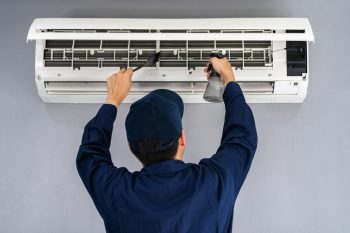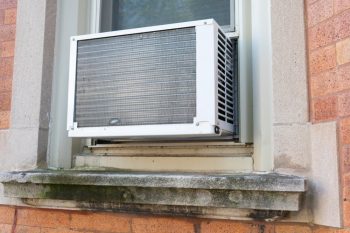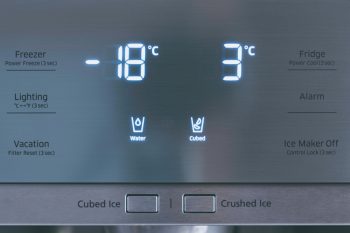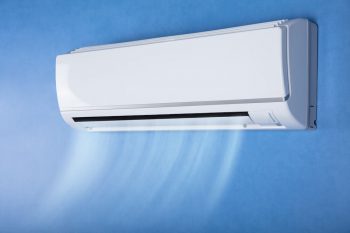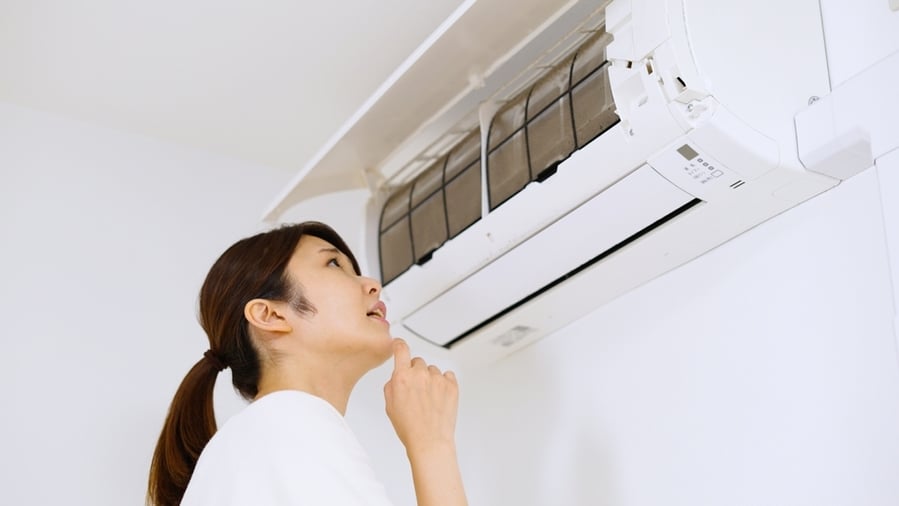
Mold thrives in dark, moist places. And because the interior of your air conditioner meets these requirements, it’s not impossible for mold spores to take up residence in your cooling appliance.
But how can you tell when there’s mold in your air conditioning unit? Here are some tell-tale signs:
- Mold growth in an AC will produce fuzzy flecks and spots throughout the unit’s interior.
- The smell of mold will often waft through the air when the unit is turned on.
- If the mold infestation has persisted long enough, the deposits may start to show in other parts of the house.
- You may be able to clean a mold infestation if it’s just starting, but it’s recommended that you opt for professional cleaning regardless of the extent of the mold presence.
Mold is a fungal growth that thrives and grows in damp, dark places. The spores can spread throughout your home, creating a mold infestation that can become a serious health hazard. Long-term mold exposure can cause respiratory difficulties and allergy-like symptoms.
Because air conditioners blow out air, mold inside the unit uniquely threatens your household environment. If spores are left untreated, your AC could begin a widespread household mold infestation.
Signs That Your AC Has Mold
1. Black, White, or Green Colored Flecks
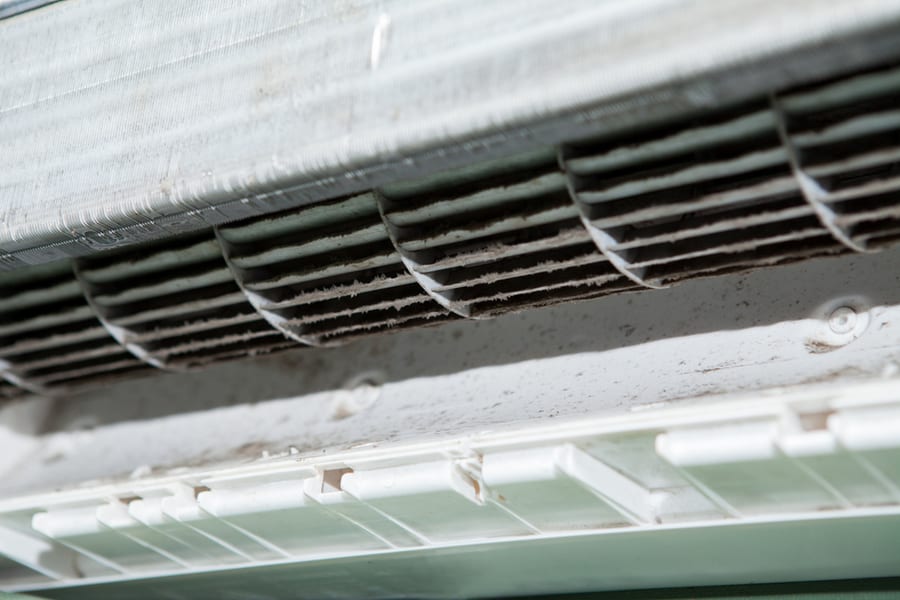
Look into your unit, and you might find black, white, or green colored spots collecting in a particularly damp area. Upon closer inspection, these dots may have some fuzz over them.
Remember that mold can come in a wide array of colors. While black, white, and green are the most common, some species of mold can appear orange, yellow, or even pink.
2. Moldy Smell
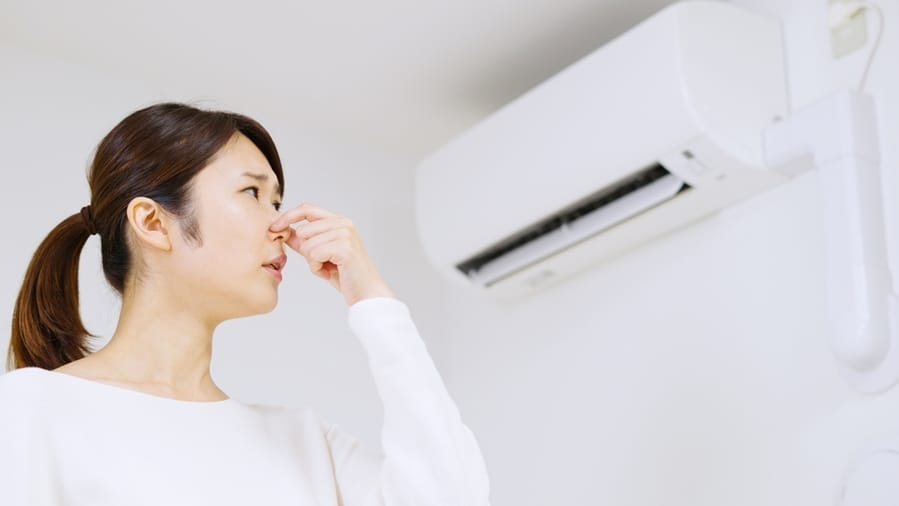
You might not notice a smell when your air conditioner is turned off. But the moment the unit starts blowing out air, you might be overwhelmed with a strong, earthy, musty smell.
Sometimes, mold can even smell like rotting plant matter. The smell typically doesn’t go away. So you’ll notice that the odor sticks around even after running your air conditioner for hours.
Most of the time, the smell will become more pronounced as you approach your air conditioner.
3. Mold Deposits Around Your Home
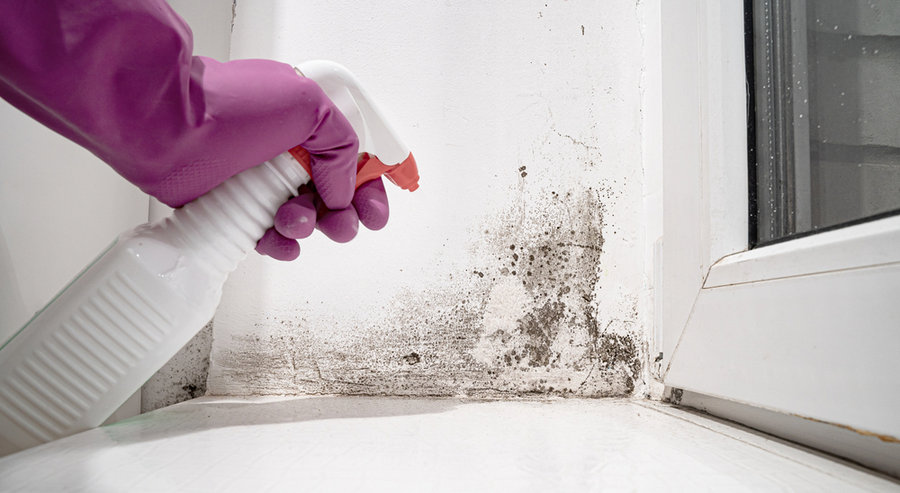
Every time you turn on your air conditioner, it blows out spores that fly through your home, and look for a suitable place to stick around.
If the mold growth has been around for a while, then you might find many other mold colonies spreading around your home.
Commonly, mold will stick where it’s dark and damp. If you’ve got a window or split AC, the new colonies will reside in the same room before spreading throughout the house.
How To Remove Mold From AC
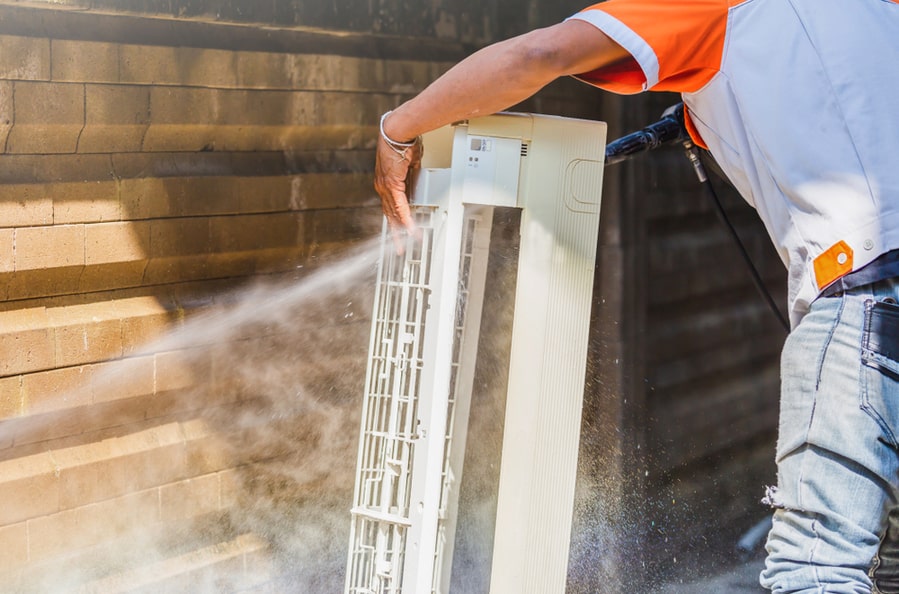
If the mold infestation is fairly new and just starting, you can clean it independently. Here’s what you can do:
- Take a clean microfiber cloth and dampen it with warm water and bleach.
- Open your air conditioner and wipe down all visible surfaces, especially those with mold.
- Please take out the filters and clean them or replace them entirely.
- Leave the unit open to allow the surfaces to dry.
For more extensive mold growth, it’s recommended that you seek the help of a professional. Inhaling mold spores can be dangerous to your health.
Do not attempt to clean severe mold growth without proper tools, cleaners, and safety equipment.
Summary
Mold growth in your air conditioner isn’t uncommon, but that doesn’t mean you can leave it be. When those first signs of mold infestation show, act quickly.
If you can clean the unit yourself, thoroughly wiping it with warm water and bleach might be enough. But it’s best to call up a professional for more serious infestations.
Frequently Asked Questions
What Causes Mold in AC Units?
Air conditioners pull humidity out of your home’s ambient air, collecting moisture in its drainage system.
Of course, condensation happens during that process, causing some moisture to form on the unit’s interiors. Because it’s dark in an air conditioner, the moist conditions invite mold formation.
How To Prevent Mold From Growing in an AC?
Although mold can grow in an air conditioner, it doesn’t mean it always has to.
There are things you can do to prevent the spores from finding refuge in your cooling appliance, and here are some of them:
- Routinely clean your unit.
- Hire professional cleaning services at least once a year.
- Maintain and repair your AC’s drainage system whenever necessary.
- Insulate ducts for your centralized air conditioning system.
- Look for leaks and fix them as soon as they appear.

